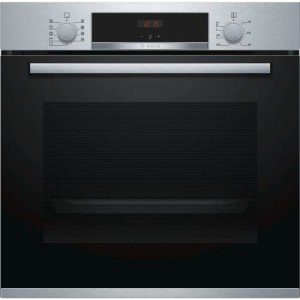The Rise of Built-in Ovens: A Blend of Functionality and Style in Modern Kitchens
In recent years, the kitchen has developed into a central hub of the home where functionality meets design. Among the many appliances that contribute to this transformation, built-in ovens stand apart as a popular option for house owners and designers alike. These sleek and efficient home appliances use a wide range of benefits, accommodating the requirements of modern culinary enthusiasts while boosting the general visual of the kitchen.
What Are Built-in Ovens?
Built-in ovens are kitchen area home appliances created to be installed directly into the cabinets, providing a seamless and integrated appearance. Unlike conventional freestanding ovens, which can use up important flooring space and interfere with the flow of a kitchen style, built-in ovens can be positioned at eye level or conveniently stashed, making the most of effectiveness and ease of use.
Types of Built-in Ovens
Wall Ovens: These ovens are installed in a wall cabinet and can be placed at a height that eliminates the need to bend down. Wall ovens often are available in single and double configurations, allowing for flexible cooking alternatives.
European Models: Known for their compact style, European built-in ovens are popular in smaller sized cooking areas where space is at a premium. They typically include innovative features while preserving a smooth appearance.
Combination Ovens: These flexible appliances integrate several cooking approaches, such as convection baking and microwave cooking, in one unit. They conserve space and time, making meal preparation more efficient.
Steam Ovens: Gaining traction in high end kitchen areas, steam ovens use wetness to cook food, keeping nutrients while developing perfectly tender dishes. They can be built-in as standalone systems or integrated with other cooking types.
Advantages of Built-in Ovens

1. Area Savvy Design
Built-in ovens are an excellent service for optimizing space in the kitchen area. With their structured style, they can be included nicely into kitchen cabinetry, enabling a more organized cooking location. This design option releases up counter space for food preparation and improves the overall flow of the kitchen.
2. Visual Appeal
Built-in ovens come in a variety of designs and surfaces, consisting of stainless-steel, black, and custom kitchen cabinetry options. This flexibility permits house owners to select an oven that complements their kitchen design, whether it be modern, traditional, or minimalist. The seamless integration creates a polished look that improves the kitchen area's visual appeal.
3. Increased Accessibility
Installing a built-in oven at eye level not just makes it more available however also boosts security by reducing the risk of burns and injuries related to flexing down to retrieve hot dishes. This ergonomic benefit is particularly advantageous for people with mobility issues or those who cook frequently.
4. Advanced Technology and Features
Modern built-in ovens are equipped with the most recent cooking technologies, consisting of touch controls, Wi-Fi connection, and smart functions that permit users to monitor and manage their cooking from a mobile phone. Many models likewise provide self-cleaning alternatives, guaranteeing upkeep is as simple and easy as the cooking procedure.
5. Improved Cooking Experience
With numerous cooking modes, including convection cooking, broiling, and baking, built-in ovens cater to varied culinary requirements. The precise temperature level control and even heat circulation also add to better cooking results, improving the general dining experience.
Considerations When Choosing a Built-in Oven
While built-in ovens provide numerous benefits, potential buyers ought to consider a number of elements before purchasing:
Area Availability: Measure the designated location to ensure an appropriate fit, representing ventilation and clearance requirements.
Capacity: Choose an oven size that meets cooking needs, especially for larger households or devoted performers.
bulit-in ovens and Technology: Assess which functions are important for cooking processes. Do you need a steam function or sophisticated clever technology?
Spending plan: Built-in ovens can differ commonly in price, so it's important to develop a budget while considering long-term value and toughness.
Conclusion
Built-in ovens have essentially altered the landscape of contemporary cooking areas, offering a mix of elegance, usefulness, and advanced technology. As cooking becomes an increasingly valued skill and social activity, the need for high-quality devices that improve both experience and design is most likely to continue growing. Investing in a built-in oven not only raises the baking and cooking process but also contributes to a trendy and functional cooking area space that satisfies the requirements of today's families. Whether you're a casual cook or a cooking specialist, a built-in oven can make all the difference in your kitchen's performance and design.
